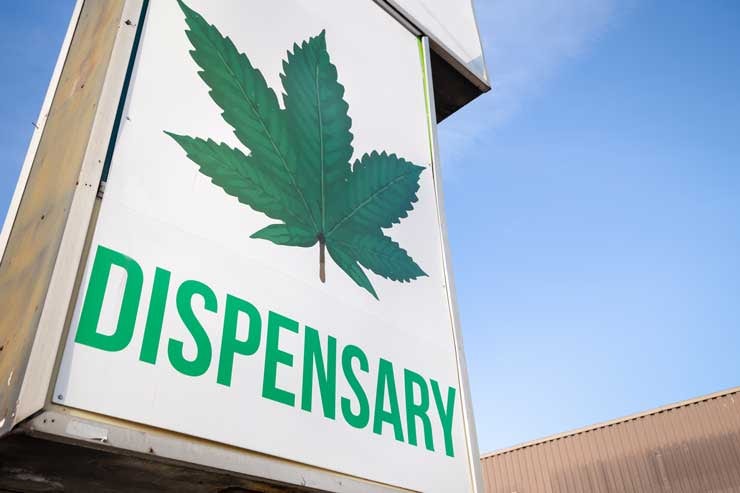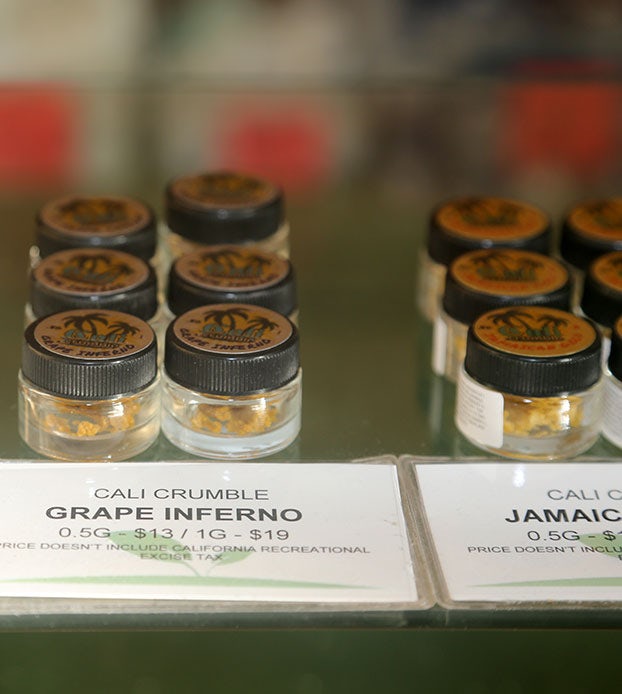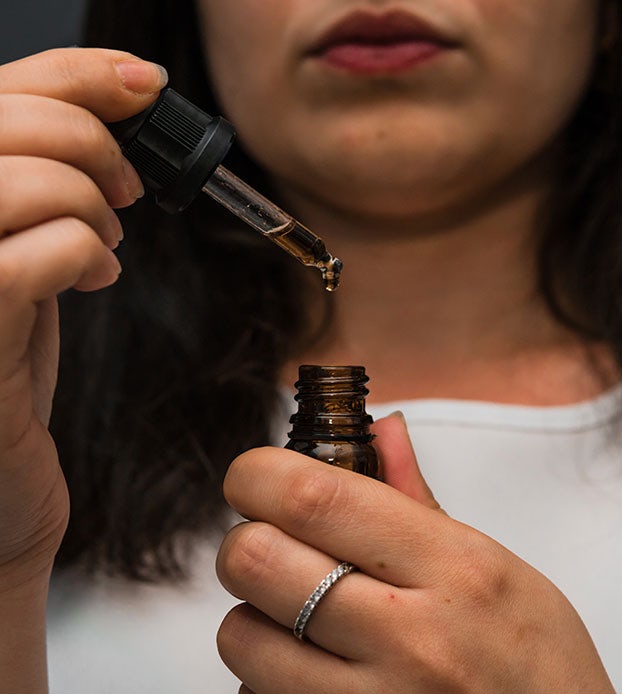There’s plenty of evidence showing that cannabis can help with a variety of medical conditions. Like anything else you put in your body, however, it can have side effects. Sometimes those are the desired effect, other times can be negative, undesirable effects.
As with many things in life, moderation is key. One thing that makes cannabis so unique is its biphasic nature: low and high doses can have opposite effects. Smoking a small amount of cannabis can produce the desired effect, while consuming a larger amount can often cause undesired side effects.
Unwanted side effects of cannabis can vary in severity from mildly uncomfortable to rare instances that may require medical attention. In this article you’ll find a comprehensive list of these side effects along with tips on how to relieve each symptom — and prevent them as much as possible. Use it to make more informed decisions about your cannabis use, and don’t hesitate to contact your doctor if you have any questions as to how cannabis may affect you.
Common side effects of THC
The side effects most commonly reported by cannabis users tend to be mild in terms of severity:
- Anxiety/paranoia
- Cough/phlegm/bronchitis
- Dizziness
- Drowsiness/fatigue
- Dry mouth
- Impaired coordination and cognitive functioning
- Increased appetite – “the munchies”
- Nausea
- Red eyes
- Short-term memory deficits
Anxiety/paranoia
Anxiety and paranoia are two typical hallmarks of negative cannabis side effects. These symptoms can be mild for some or more drastic in the case of vulnerable populations, like those with certain mental health disorders. 1
Cough/phlegm/bronchitis
Coughing and phlegm associated with cannabis use is usually the result of inhalation methods such as smoking and vaping. While there has not been a decisive association found between smoking cannabis and lung cancer, it can damage the lungs similar to tobacco smoke. 2
Dizziness
While not dangerous, the feeling of dizziness or lightheadedness caused by consuming cannabis can be worrying. This effect is caused by a sudden drop in blood pressure, and usually lasts only a few seconds. 3
Drowsiness/fatigue
Another commonly reported side effect of cannabis use is drowsiness. Users that experience drowsiness when medicating may want to look for a more energetic strain, such as those high in limonene and pinene. 4
You can also indulge in a short power nap, or if you can’t nap, try consuming small amounts of caffeine to counter any drowsiness.
Dry mouth
Also known as “cottonmouth,” dry mouth occurs when cannabinoids bind to salivary glands in the mouth. This causes the glands to stop receiving messages from the parasympathetic nervous system instructing them to produce saliva, resulting in decreased saliva production. 5
There are many different ways to treat dry mouth. You can drink water, chew ice chips, gum, or even consume special lozenges designed to combat dry mouth. You should also avoid concurrent use of alcohol or tobacco as these can also leave the mouth dry. Avoid drinks with high levels of tannins like wine, which can also dry out the mouth.
Using a vape, as opposed to smoking cannabis, may also help reduce dry mouth.
Impaired coordination and cognitive function
Some cannabis consumers may experience impaired reaction times or drowsiness — which is why you should never smoke and drive. Reaction times are contingent on several factors.
One of these is your dopamine levels. Dopamine plays a crucial role in voluntary movement. Having too much or too little dopamine can cause cognitive impairments. This is thought to be one of the reasons why cannabis users can experience cognitive impairments like slowed reaction times. Exercise is one way you can get your body to produce more dopamine. 6 7
While sensitivity to cannabis can vary wildly among individuals, cognitive dysfunction is largely thought to be dose dependent. Research suggests “very heavy use” of cannabis is associated with a decline in cognitive performance. You can regulate this side effect by simply monitoring your dose — or even with microdosing (consuming very small quantities of cannabis over time). 8
Increased appetite – “the munchies”
One of the more widely depicted side effects of cannabis is “the munchies,” or a state of intense hunger. There are a few things you can do to combat the munchies:
Certain cannabinoids are thought to have appetite suppressing properties. One cannabinoid that may have such an effect is tetrahydrocannabivarin (THCV), but research is ongoing. CBD-rich strains may also reduce appetite as CBD weakly binds to the body’s CB1 receptors, which are thought to modulate appetite and satiety. CBD and THCV act as antagonists at CB1, blocking further compounds from binding to the site. This could theoretically reduce the CB1 receptor’s ability to stimulate the appetite. 9

While the temptation may be strong, salty and sugary foods can actually exacerbate the munchies instead of relieving them. “Sweet and salty foods and beverages are incredibly addictive,” says Kristin Kirkpatrick, MS, RD, LD. “They trigger the release of dopamine, a brain chemical that motivates us to engage in rewarding behaviors.” As our tolerance to these types of foods builds with time, we’ll eventually need more food to satisfy the urge, creating an addiction.
In other words, eating sweet and salty foods feels so good that it’s inevitably going to trigger a cycle where you can’t help but crave more sugary and salty foods. Many THC users can attest to this effect, which can be quite compelling.
Nausea
While THC is widely accepted as an effective regulator of nausea and vomiting in conditions such as cancer and HIV/AIDS, at higher doses it can sometimes cause those same symptoms. This is explained by the biphasic effect, under which different doses of the same active ingredient can cause opposite effects.
The best way to avoid this unpleasant side effect is to start low and go slow, and always use the smallest amount of cannabis possible to achieve the desired effect. 10
Red/Dry/Itchy Eyes
The most tell-tale sign that someone has recently consumed cannabis is the dreaded red/dry eyes. Cannabis can act as a natural vasodilator, reducing blood pressure by causing capillaries and blood vessels to dilate. This dilation increases blood flow to the area that causes redness. 11
Eye drops can be used to minimize discomfort or drying. You can also drink water to ensure adequate hydration and to help restore moisture to the eyes. Vasoconstrictors — compounds that narrow vessels — may also help reduce eye redness. 12
Short-term memory deficits
Recall impairment and short term memory deficits are common side effects of cannabis, THC in particular. These effects are short lived, though, and patients experience a resolution of memory symptoms following a period of cannabinoid abstinence.
Contrary to popular belief a single dose of THC “is unlikely to have persistent effects on memory function.” One team of researchers found administering THC impaired episodic memory and verbal recall for two hours after oral administration. No residual effects were present 24 or 48 hours later. 13
CBD, however, may help protect any short term memory deficits caused by THC. As such, it may help reverse any negative cognitive effects on memory.
Serious and less common side effects of THC
The following side effects can range from mildly uncomfortable to those warranting serious medical attention. While the latter is fairly rare, you should always exercise caution when consuming cannabis.
- Cannabinoid hyperemesis syndrome
- Dependency
- Erectile dysfunction
- Increased heart rate (tachycardia)
- Long-term cognitive impairment
- Psychosis
Cannabinoid hyperemesis syndrome
A small subset of heavy cannabis users suffer from cannabinoid hyperemesis syndrome (CHS), in which cannabis consumption can cause recurring episodes of severe nausea and cyclic vomiting that last for days or weeks. CHS can present without warning after years or even decades of consuming cannabis, and the only treatment is abstaining from cannabis use. 14
While it’s clear that chronic cannabis use is what triggers the syndrome, researchers are yet to fully understand the mechanism behind it. Some scientists believe that CHS is the result of dysregulation or imbalance in the endocannabinoid system. 15
Dependency
While the majority of people who use cannabis will not become addicted, some people can develop what is known as cannabis use disorder. Research has found that around one in 10 cannabis users will develop a physical, psychological and/or social dependence. 16
While some addicted cannabis users will experience symptoms such as decreased appetite, headaches, irritability, insomnia and abdominal pain after discontinuing use, the withdrawal process is generally much milder than other addictive substances.
There are several factors that may contribute to developing cannabis use disorder, including family history of addiction, mental health conditions such as depression and anxiety, and adolescent use.
Erectile dysfunction
While the wisdom of the masses holds that cannabis use can cause erectile dysfunction, there’s no definitive research to support that claim. Some subjects in studies have reported improved erectile function with cannabis use, while others report the opposite. One study found that the influence of cannabis on sexual behavior across the board appeared to be dose dependent.
Increased heart rate (tachycardia)
Some cannabis users may experience an increased or irregular heart rate (tachycardia), particularly if consuming cannabis that contains THC. This rapid heart rate often begins within a few minutes of inhaled cannabis, peaking at the 30 minute mark. Effects can persist for 90 minute or longer. You can minimize your risk of tachycardia by avoiding the use of caffeine with cannabis, staying well hydrated, and keeping your dose of THC low. 17
The first thing to do when experiencing tachycardia is to take a deep breath. Remember that cannabis is safe to use and there have never been any reported deaths solely attributed to cannabis use.
You can employ a variety of techniques for treating tachycardia. These include having a refreshing drink, consuming CBD, using diaphragmatic breathing techniques, practicing yoga, or taking a cold shower. Moderate exercise may also help.
Extreme cases may result in cardiac arrhythmia and require specialized care. This can include antiarrhythmic drugs administered intravenously at a hospital.
Long-term cognitive impairment
Regular cannabis use among adolescents has been found to have lasting effects on cognitive function and brain development. Research has found that teenagers who use cannabis regularly, have decreased memory function, attention and learning capacity, as well as changes to the structure of the brain. These changes in grey matter can lead to a higher risk of mental illnesses such as schizophrenia, as well as increased risk of other drug use. 18
Triggered/Induced Psychosis
The most extreme negative side effect that can come with cannabis use is induced psychosis, or the manifestation of psychotic-like symptoms.
If you have experienced psychotic symptoms in the past, it is absolutely necessary to speak with a doctor, preferably a psychiatrist with experience recommending cannabis before even trying cannabis.
You can mitigate your odds of induced psychosis by opting for cannabis strains high in CBD and low in THC. If you experience psychotic-like symptoms, you can attempt to alleviate them by administering CBD (for rapid onset, we recommend a vaporizer, inhaler or concentrate). If you’re with someone else, you can ask them to assess the situation (and to accompany you if you do go to hospital). In all likelihood, a visit to the ER will mean being put in a safe space until the intoxicating effects wears off and you feel better, and possibly being given medications like antihistamines, antipsychotics (haloperidol), and anxiolytic drugs diazepam and lorazepam. 19

How to Mitigate Marijuana Side Effects
Though relatively minor and certainly not life-threatening, some cannabis side effects can be quite uncomfortable. Luckily there are many things you can do to counter these effects, including:
- Avoiding concurrent use with stimulants (alcohol, caffeine, nicotine) as these can exacerbate the negative side effects of cannabis in a number of ways. Small amounts of alcohol, for instance, can significantly increase the amount of THC in the blood. 20
- Choosing strains that are CBD-rich or have complimentary terpene profiles.
- Consuming CBD, as it can potentially reduce the negative effects of THC. 21
- Exercise! You might find that taking a walk helps. Others find yoga to be especially calming. Dance is also another option. You can also opt for a cold shower. Pick a physical activity and get to it.
- Many people report that chewing on black peppercorns can reduce anxious feelings associated with being too high. This is because black peppercorns contain terpenes like myrcene and b-caryophyllene, which may be able to help mediate side effects of the ECS. You could also try making fresh lemonade as citrus and the terpene limonene is thought to exhibit similar effects, and the sugar may also help prevent some causes of anxiety. 22
- Just breathing. You can employ a variety of deep breathing exercises (“diaphragmatic breathing”) to help ease the discomfort of racing or anxious thoughts. 23
- Listening to uplifting or calming music.
Sources
- Semple, D. M., McIntosh, A. M., & Lawrie, S. M. (2005). Cannabis as a risk factor for psychosis: systematic review. Journal of psychopharmacology (Oxford, England), 19(2), 187–194. https://doi.org/10.1177/0269881105049040
- Yayan, J., & Rasche, K. (2016). Damaging Effects of Cannabis Use on the Lungs. Advances in experimental medicine and biology, 952, 31–34. https://doi.org/10.1007/5584_2016_71
- Degenhardt, L., & Hall, W. D. (2008). The adverse effects of cannabinoids: implications for use of medical marijuana. CMAJ : Canadian Medical Association journal = journal de l’Association medicale canadienne, 178(13), 1685–1686. https://doi.org/10.1503/cmaj.080585
- Russo E. B. (2011). Taming THC: potential cannabis synergy and phytocannabinoid-terpenoid entourage effects. British journal of pharmacology, 163(7), 1344–1364. https://doi.org/10.1111/j.1476-5381.2011.01238.x
- Prestifilippo, J. P., Fernández-Solari, J., de la Cal, C., Iribarne, M., Suburo, A. M., Rettori, V., McCann, S. M., & Elverdin, J. C. (2006). Inhibition of salivary secretion by activation of cannabinoid receptors. Experimental biology and medicine (Maywood, N.J.), 231(8), 1421–1429. https://doi.org/10.1177/153537020623100816
- Prashad, S., & Filbey, F. M. (2017). Cognitive motor deficits in cannabis users. Current opinion in behavioral sciences, 13, 1–7. https://doi.org/10.1016/j.cobeha.2016.07.001
- Sutoo, D., & Akiyama, K. (2003). Regulation of brain function by exercise. Neurobiology of disease, 13(1), 1–14. https://doi.org/10.1016/s0969-9961(03)00030-5
- Shrivastava, A., Johnston, M., & Tsuang, M. (2011). Cannabis use and cognitive dysfunction. Indian journal of psychiatry, 53(3), 187–191. https://doi.org/10.4103/0019-5545.86796
- Onaivi, E. S., Carpio, O., Ishiguro, H., Schanz, N., Uhl, G. R., & Benno, R. (2008). Behavioral effects of CB2 cannabinoid receptor activation and its influence on food and alcohol consumption. Annals of the New York Academy of Sciences, 1139, 426–433. https://doi.org/10.1196/annals.1432.035
- Parker, L. A., Rock, E. M., & Limebeer, C. L. (2011). Regulation of nausea and vomiting by cannabinoids. British journal of pharmacology, 163(7), 1411–1422. https://doi.org/10.1111/j.1476-5381.2010.01176.x
- Pacher, P., Bátkai, S., & Kunos, G. (2005). Cardiovascular pharmacology of cannabinoids. Handbook of experimental pharmacology, (168), 599–625. https://doi.org/10.1007/3-540-26573-2_20
- Frings, A., Geerling, G., & Schargus, M. (2017). Red Eye: A Guide for Non-specialists. Deutsches Arzteblatt international, 114(17), 302–312. https://doi.org/10.3238/arztebl.2017.0302
- Schoeler, T., & Bhattacharyya, S. (2013). The effect of cannabis use on memory function: an update. Substance abuse and rehabilitation, 4, 11–27. https://doi.org/10.2147/SAR.S25869
- Fleming, J. E., & Lockwood, S. (2017). Cannabinoid Hyperemesis Syndrome. Federal practitioner : for the health care professionals of the VA, DoD, and PHS, 34(10), 33–36.
- Nourbakhsh, M., Miller, A., Gofton, J., Jones, G., & Adeagbo, B. (2019). Cannabinoid Hyperemesis Syndrome: Reports of Fatal Cases. Journal of forensic sciences, 64(1), 270–274. https://doi.org/10.1111/1556-4029.13819
- Hasin D. S. (2018). US Epidemiology of Cannabis Use and Associated Problems. Neuropsychopharmacology : official publication of the American College of Neuropsychopharmacology, 43(1), 195–212. https://doi.org/10.1038/npp.2017.198
- Fisher, B. A., Ghuran, A., Vadamalai, V., & Antonios, T. F. (2005). Cardiovascular complications induced by cannabis smoking: a case report and review of the literature. Emergency medicine journal : EMJ, 22(9), 679–680. https://doi.org/10.1136/emj.2004.014969
- Jacobus, J., & Tapert, S. F. (2014). Effects of cannabis on the adolescent brain. Current pharmaceutical design, 20(13), 2186–2193. https://doi.org/10.2174/13816128113199990426
- Zaman H, Sampson SJ, Beck ALS, Sharma T, Clay FJ, Spyridi S, Zhao S, Gillies D. Benzodiazepines for psychosis‐induced aggression or agitation. Cochrane Database of Systematic Reviews 2017, Issue 12. Art. No.: CD003079. DOI: 10.1002/14651858.CD003079.pub4
- Marilyn A. Huestis, PhD et al. Controlled Cannabis Vaporizer Administration: Blood and Plasma Cannabinoids with and without Alcohol. Clinical Chemistry, May 2015 DOI: 10.1373/clinchem.2015.238287
- Niesink, R. J., & van Laar, M. W. (2013). Does Cannabidiol Protect Against Adverse Psychological Effects of THC?. Frontiers in psychiatry, 4, 130. https://doi.org/10.3389/fpsyt.2013.00130
- Russo E. B. (2011). Taming THC: potential cannabis synergy and phytocannabinoid-terpenoid entourage effects. British journal of pharmacology, 163(7), 1344–1364. https://doi.org/10.1111/j.1476-5381.2011.01238.x
- Zaccaro, A., Piarulli, A., Laurino, M., Garbella, E., Menicucci, D., Neri, B., & Gemignani, A. (2018). How Breath-Control Can Change Your Life: A Systematic Review on Psycho-Physiological Correlates of Slow Breathing. Frontiers in human neuroscience, 12, 353. https://doi.org/10.3389/fnhum.2018.00353
Sign up for bi-weekly updates, packed full of cannabis education, recipes, and tips. Your inbox will love it.

 Shop
Shop Support
Support


















